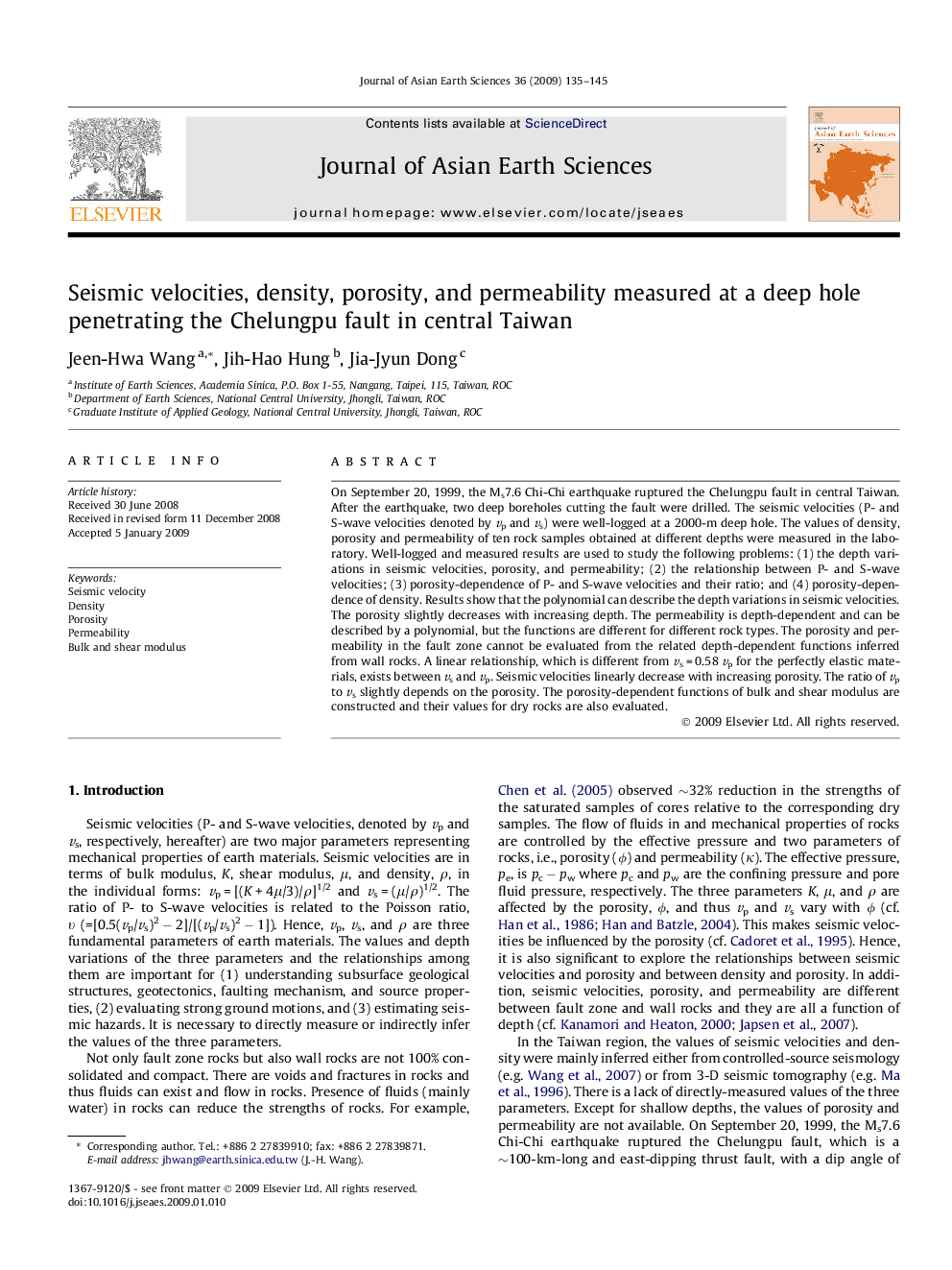| Article ID | Journal | Published Year | Pages | File Type |
|---|---|---|---|---|
| 4732479 | Journal of Asian Earth Sciences | 2009 | 11 Pages |
On September 20, 1999, the Ms7.6 Chi-Chi earthquake ruptured the Chelungpu fault in central Taiwan. After the earthquake, two deep boreholes cutting the fault were drilled. The seismic velocities (P- and S-wave velocities denoted by vp and vs) were well-logged at a 2000-m deep hole. The values of density, porosity and permeability of ten rock samples obtained at different depths were measured in the laboratory. Well-logged and measured results are used to study the following problems: (1) the depth variations in seismic velocities, porosity, and permeability; (2) the relationship between P- and S-wave velocities; (3) porosity-dependence of P- and S-wave velocities and their ratio; and (4) porosity-dependence of density. Results show that the polynomial can describe the depth variations in seismic velocities. The porosity slightly decreases with increasing depth. The permeability is depth-dependent and can be described by a polynomial, but the functions are different for different rock types. The porosity and permeability in the fault zone cannot be evaluated from the related depth-dependent functions inferred from wall rocks. A linear relationship, which is different from vs = 0.58 vp for the perfectly elastic materials, exists between vs and vp. Seismic velocities linearly decrease with increasing porosity. The ratio of vp to vs slightly depends on the porosity. The porosity-dependent functions of bulk and shear modulus are constructed and their values for dry rocks are also evaluated.
